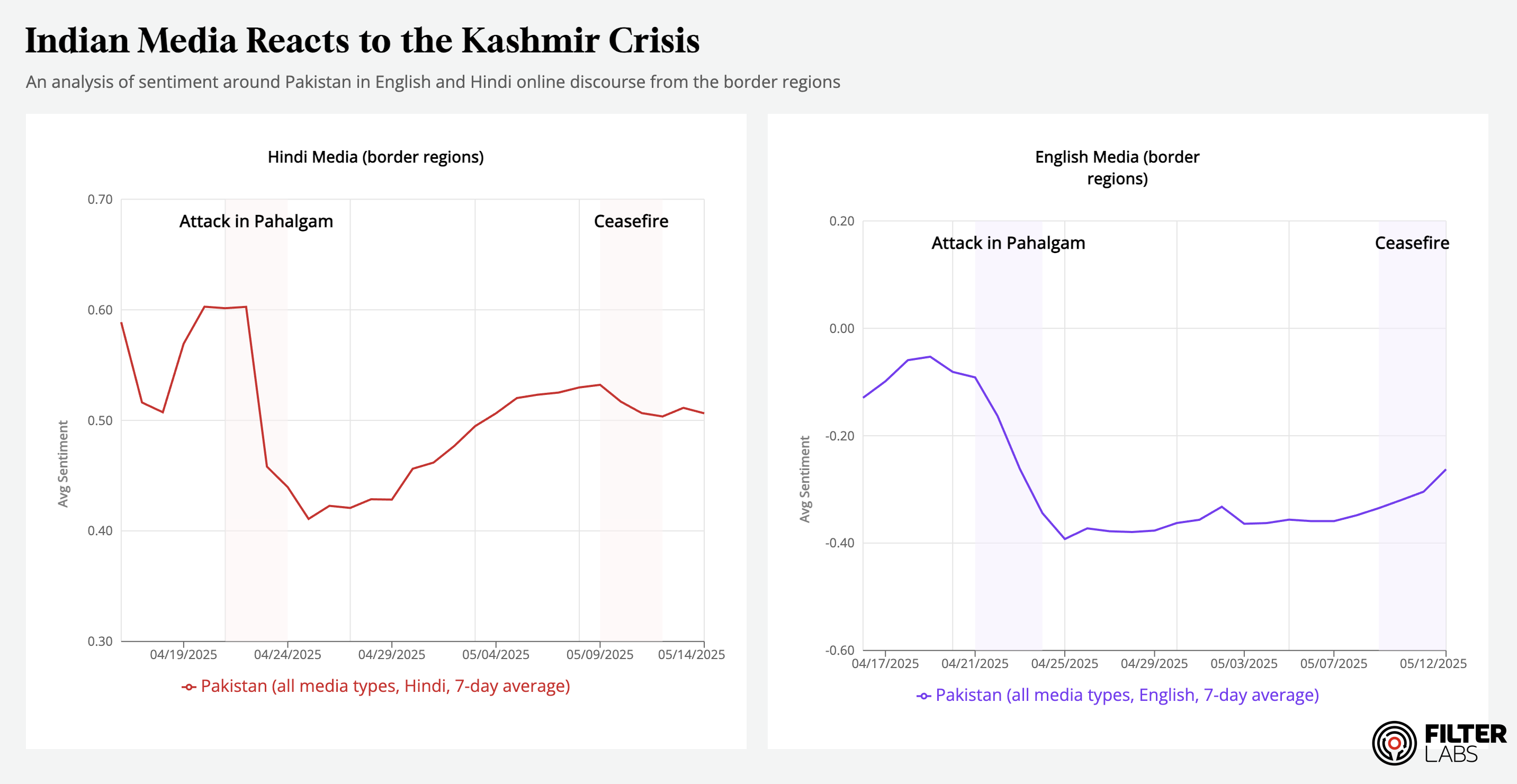Indian Media Reacts to the Kashmir Crisis
|
After a terrorist attack that left 26 dead in the Kashmir region, tensions between India and Pakistan elevated significantly and quickly. Whether or not the ceasefire holds, strong feelings on all sides remain. FilterLabs has been monitoring these online feelings closely. Zeroing in on the contested border region, we used Talisman, our data dashboard, to analyze both Hindi- and English-language media. There were similarities, but also a few telling differences. In both languages, sentiment in the media dropped fast after the initial attacks and then rose gradually over the coming days. Coverage initially focused on local protests, business shutdowns, and calls for retaliation against the terrorists. Opposition parties also slammed the government for alleged intelligence failures. Despite the similarities, there were some telling differences:
We used Talisman to zero in on local news in multiple languages because we believe these regional and linguistic differences matter. As a tense period continues, it is in our best interest to understand how media environments react differently to the news—and how they might shape their audiences’ reactions in turn. Explore the Data in TalismanHave questions of your own? Want more hyper-local insights into hard-to-reach places (like Russia) around the world? Check out the live data on analytics platform, Talisman! All subscribers can check out the live chart above; those with full-access subscriptions can also investigate the individual artifacts underlying it, and so much more. This is a developing situation, so we'll be continuing to update the dashboard for this story with new data over the next week; stay tuned to Talisman for updates! If you don’t have a Talisman account yet, sign up now—a basic subscription is free! |
%20-%20Tradmark.png)
